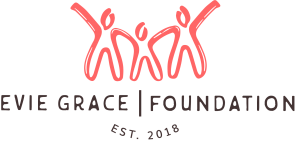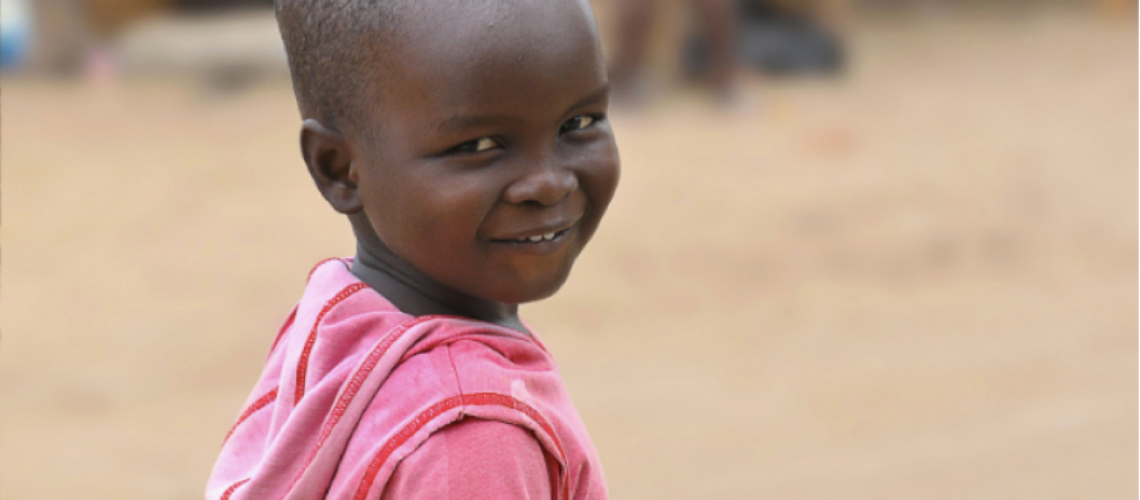Known as the ‘Warm Heart of Africa’, Malawi is a small, landlocked country in southeast Africa. Malawi is one of the poorest countries globally with 70% of its population living below the poverty line (UNICEF 2020). Malawi ranks 172 out of 189 countries in the 2018 Human Development Report, and despite making some significant progress in recent years, such high levels of poverty have a grave impact on the wellbeing of children who face a number of additional vulnerabilities.
With 66% of Malawians under the age of 25, Malawi has a very young population. The number of children growing up on the streets of urban areas is rising as a result of endemic poverty and severe social issues families and communities are facing. Inadequate access to food, healthcare and education, child abuse and neglect, migration and family breakdown, and the impact of HIV and AIDS are the major reasons cited as to why many children are turning to a life on the streets. Estimates suggest that around 8,000 children or more live on the streets of Malawi’s major cities, 80% of whom have been orphaned by HIV and AIDS (Mandalazi et al. 2013). Many of these children are living without any form of protection or support, making them vulnerable to further abuse, exploitation and neglect.
Being a street child means going hungry, sleeping in insalubrious places, and facing violence. It means growing up without companionship, love and protection, having no access to education or medical services, losing all dignity and becoming an adult before even having been a child.
The increasing number of street children is one of the most serious urban social problems facing Malawi today. The majority of street children live in conditions of severe deprivation, which place them at all kinds of physical, social and emotional risk. Among the most serious threats to health of street children is the high degree of exposure to sexual abuse. Rape, prostitution, sexual bartering and exchange, casual sex and romantic sexual relationships increase their risk of acquiring sexually transmitted infections (Mandalazi et al. 2013). Girls face an added risk of becoming pregnant and some proceed to deliver their infants and undergo the associated problems of early childbearing and motherhood, and the cycle of poverty and street life continues.
The situation for girls in Malawi is particularly challenging. Malawi is characterised by a high prevalence of violence against women and girls, from traditional practices that harm girls and teenagers (from sexual initiation rituals to child marriage) to sexual and gender-based violence and intimate partner violence (UNICEF 2020). A national survey on violence against children and young women found that among adolescent girls and young women 68.4% of those aged between 18-24 years and 76.3% of those aged between 13-17 years reported experiencing multiple incidents of sexual abuse before the age of 18 (Pendleton et al. 2016).
In Malawi, some 42% of girls are married while still children, and 29% of girls aged 15-19 have already begun childbearing. Both marriage and pregnancy – which often go hand-in-hand – contribute to high school drop-out rates in the country. The practice of child marriage arguably affects not only the child bride and her immediate environment, but also produces long lasting effects at the societal level. Societal consequences from child marriage may stem from the fact that child brides are often ill-prepared for their role as mothers, which can harm the well-being of the next generation (UNICEF, 2012). Also, disempowerment of women through the practice of child marriage not only harms the girls that are being married off as children but may moreover have negative consequences for the social and economic well-being of the society as a whole. Women’s empowerment has repeatedly been argued to be beneficial for the economic development of a society and to the extent that early marriage hinders girls from unleashing their full potential, reducing the prevalence of child marriage can be beneficial for the society as a whole (Duflo, 2012).
At the Evie Grace Foundation our mission is to offer long-term, life-changing solutions for the children that we support. To further this goal, we plan to establish a Therapeutic Transitional Centre for Street Girls in Malawi. Often these girls are excluded from receiving institutional care due to severe behavioural issues, drug dependency, or pregnancy. We plan to change that. Our centre will accommodate up to 60 girls at any one time between the ages of 0-18 who have been living on the streets, and through the implementation of specific trauma informed therapeutic models of care, provide them with the support of an environment that empowers them to become self-reliant, productive and healthy members of their communities.
Our vision is to create a safe and loving home for the vulnerable girls that we support with all the critical resources they need to thrive, including food, clothing, shelter, education, medical attention, psychological care and love. In order to build community participation and engagement, our long-term goal is to have both a medical clinic and primary school on-site, however the initial construction of our centre will focus on being within close range of these facilities. We aim to boost local community employment opportunities by hiring professionals to help run the centre, including a manager, social workers, maintenance staff and possibly an on-site nurse.
In cases where poverty, not abandonment, was the major driver of separation, reintegration with families and communities will be the ultimate goal. Fundamentally, this project relies on prevention and education to rescue children from a life on the streets and build their resilience. Ongoing supervision and support will be provided on-site, as well as to girls who have returned to their families, without which many are likely to end up back on the streets. A dedicated social worker will be allocated to each child, who will visit their families and communities and support them if difficulties arise. The idea is to inform the community, parents and legal guardians about the situation of children living on the streets, their rights and their needs in the hope to overcome some of the challenges that lead children to run away to the streets in the first place.
Our girls will get the opportunity to live and operate in a modern environment with many for the first time experiencing secure housing, modern washrooms and bedrooms, regular meals, access to electricity and a supportive social environment. Additional areas of permaculture and recreational activities will complement their overall development. Our Therapeutic Transitional Girls Home has been tactfully designed with sustainability in mind. Solar panels, rainwater systems, sustainable building materials, and innovative waste removal technologies will allow us to build a closed-loop production system, thus improving our economic and environmental outputs simultaneously. The home will be situated within at least 10 acres of working farmland, with food production and animal raising imperative to the running of the center. These resources will provide food for both consumption on-site and as a potential source of income from commercial sale at local markets. This will allow us to become more self-sufficient whilst supporting the local economy in a time of great food scarcity. Maintaining these assets will also offer an opportunity for the girls to learn new skills and aid in their therapeutic recovery.
Furthermore, at the Evie Grace Foundation we believe that education is the key to change. To mitigate the exposure of our girls to exploitation and to prepare them for reintegration into society, in addition to their regular schooling, we will provide them with comprehensive human rights and sexual health education. These lessons will include not only information about how to prevent unintended pregnancies and sexually transmitted infections, but also education about gender equality, human rights and the value of delaying marriage until adulthood.
All of our guidelines and protocols are guided by the Convention on the Rights of the Child (CRC) and the Convention on the Elimination of all Forms of Discrimination against Women (CEDAW). They are also in line with the Malawi Growth and Development Strategy through the United Nations Development Assistance Framework (UNDAF) and contribute to sustainable economic development and food security; social protection and disaster reduction and management; access to equitable basic social services; HIV and AIDS prevention; care and treatment; and good governance. We plan to integrate the four cross-cutting areas of the UNDAF in our procedures: human rights, gender, disaster risk reduction and capacity development in efforts to progressively realise the rights of children and women through improved child survival, development, protection and participation.
References:
Convention on the Elimination of All Forms of Discrimination against Women (CEDAW) 1979, (resolution 34/180), adopted and opened for signature, ratification and accession by General Assembly of 18 December 1979, entry into force 3 September 1981, in accordance with article 27(1).
Convention on the Rights of the Child (CRC) 1989, (resolution 44/25), opened for signature 20 November 1989, entered into force 2 September 1990 in accordance with article 49.
Duflo, E 2012, ‘Women Empowerment and Economic Development’, Journal of Economic Literature, Vol.50, No.4, pp.1051–1079.
Mandalazi, P et al. 2013, ‘Street children’s vulnerability to HIV and sexually transmitted infections in Malawian cities’, Malawi medical journal: the journal of Medical Association of Malawi, Vol.25, No.1, pp.1-4.
Pendleton, J, Mellish, M & and Sapuwa, H 2016, PEPFAR Malawi Gender Assessment Report 2015, Palladium, Health Policy Plus, Washington, DC.
UNICEF Malawi 2020, Ending violence against women and girls in Malawi: What do we know?, United Nations Children’s Fund (UNICEF), Lilongwe, Malawi.
UNDP 2019, Human Development Report, United Nations Development Programme, viewed 6 October 2020, http://hdr.undp.org/en/content/human-development-index-hdi
UNDP 2018, The Malawi Growth and Development Strategy (MGDS) III; Building a Productive, Competitive and Resilient Nation (2017-2022), viewed 6 October 2020, https://www.mw.undp.org/content/malawi/en/home/library/the-malawi-growth-and-development-strategy-iii-.html
UNFPA 2012, Gender Equality, United Nations Population Fund, viewed 6 October, https://www.unfpa.org/gender-equality
UNFPA 2012, Marrying too young: end child marriage, United Nations Population Fund, New York.
UNICEF 2012, All Children Count: A Baseline Study of Children in Institutional Care in Malawi, United Nations Children’s Fund (UNICEF), Lilongwe, Malawi.
Written by Beth Joslin


